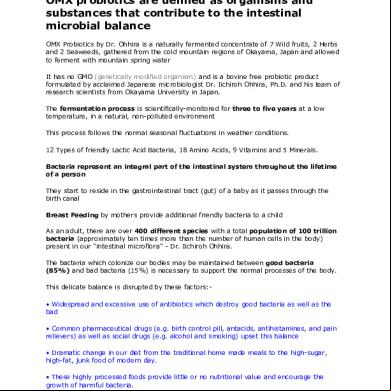Dangerous Drugs 5b4q3k
This document was ed by and they confirmed that they have the permission to share it. If you are author or own the copyright of this book, please report to us by using this report form. Report 2z6p3t
Overview 5o1f4z
& View Dangerous Drugs as PDF for free.
More details 6z3438
- Words: 616
- Pages: 3
Dangerous Drugs Dangerous Drugs Act – Statutory law that provides for the control and regulation of the import, export, manufacture, sale/dispensing, use and storage of dangerous drugs. Storage on the Ward Dangerous drugs are kept on the ward at the nurse’s station or at the front of the ward. They are kept in a locked cupboard within a locked cupboard. The keys for this cupboard are kept on the person of the nurse who verified the amount and presence of the drugs at the beginning of the shift. Ordering from Pharmacy DDA’s are ordered when the ward stock is low (based on usage). The order is written in duplicate in a Narcotics order book. Each drug being ordered must be written on a separate sheet. The order sheet must have the name of the drug, the strength, quantity, hospital and ward and serial number (on DDA record sheet). It must be signed by the ed nurse and the nurse in charge of the ward (NOI/II). The narcotic record sheet and the order book is sent to the pharmacy. On the Narcotic record sheet, the amount of drug left in stock must be indicated. Pick-up from Pharmacy The ed nurse must receive the DDA from the pharmacy. A student nurse may receive but needs to be accompanied by a S/N. The drugs are given to the nurse and she is responsible for checking to ensure that the vials or packages are not broken and the drugs are not expired. The nurse then signs the Pharmacy Narcotic record book noting the number of drugs dispensed. The Pharmacist signs to who dispensed the drugs. The top sheet (white) of the Narcotic record book is kept by the Pharmacy; the bottom sheet (green) is kept in the book for the wards records. Upon return to ward, the other staff nurse on duty or ward manager verifies the type and amount of DDA’s received from Pharmacy and brought to the ward. She signs the Narcotic record sheet noting the number of vials/pills. The DDA’s are then placed in the locked cupboard. Drugs that must be checked by two Nurses – DDA’s, Insulin, Blood/blood products
SCHEDULE I – High potential for abuse. No currently accepted medical use.
DRUG NAMES Heroin, LSD, Marijuana
CLASS
USES
SIDE EFFECTS
n/a
n/a
n/a
II- High abuse potential: potentially severe psychological or physical dependence Currently accepted for medical use but may be severely restricted Telephone order only in emergency
Morphine, MS Contin, Duramorph
Opioid Analgesic
Severe pain
Thrombocytopenia, drowsiness, sedation, HA, cardiac arrest, N&V, rash, respiratory depression
Pethidine, meperidine, Demerol
Opioid Analgesic
Moderate to severe pain pre/postop.
Sedation, euphoria, HA, seizures, constipation, N&V, rash, bradycardia.
Percocet
Opiate analgesic
Moderate to severe pain.
Respiratory depression, sedation, drowsiness, ↑urinary output, HA, N&V
Schedule III – Abuse potential less than substances in Schedules I &II Potentially moderate or low physical dependence or high psychological dependence. Accepted for medical use phone order accepted
SCHEDULE Schedule IV –
DRUG NAMES Phenobarbital
CLASS Barbituate,
USES Sedation,
SIDE EFFECTS Drowsiness, lethargy,
Low abuse
Anticon-
epilepsy
hangover HA, N&V,
potential;
vulsant
status
rash,
epilepticus
diarrhea/constipation.
potentially very limited physical
Ativan,
Sedative,
Anxiety,irrita-
Dizziness, drowsiness,
or psychological
Lorazepam
hypnotic,
bility in
weakness, dry mouth,
antianxiety
psychiatric
diarrhea, sonstiaption,
Accepted for
disorders,
anorexia, itching, rash,
medical use,
preoperatively hypotension, cardiac
phone orders
Invx use:
arrest, orthostatic
permitted.
antiemetic
hypotension.
dependence.
prior to Valium,
Antianxiety,
chemotherapy Anxiety, acute Respiratory depression,
Diazepam,
skeletal
alcohol
neutropenia, Dizziness,
muscle
withdrawal,
drowsiness, weakness,
relaxant,
preoperatively dry mouth, diarrhea,
anti-
sonstiaption, anorexia,
convulsant
itching, rash, hypotension, cardiac arrest, orthostatic hypotension.
Schedule V – Lowest potential for abuse; potentially very limited physical or psychological dependence. Currently accepted for medical use. Ex. Antitussives, antidiarrheals
SCHEDULE I – High potential for abuse. No currently accepted medical use.
DRUG NAMES Heroin, LSD, Marijuana
CLASS
USES
SIDE EFFECTS
n/a
n/a
n/a
II- High abuse potential: potentially severe psychological or physical dependence Currently accepted for medical use but may be severely restricted Telephone order only in emergency
Morphine, MS Contin, Duramorph
Opioid Analgesic
Severe pain
Thrombocytopenia, drowsiness, sedation, HA, cardiac arrest, N&V, rash, respiratory depression
Pethidine, meperidine, Demerol
Opioid Analgesic
Moderate to severe pain pre/postop.
Sedation, euphoria, HA, seizures, constipation, N&V, rash, bradycardia.
Percocet
Opiate analgesic
Moderate to severe pain.
Respiratory depression, sedation, drowsiness, ↑urinary output, HA, N&V
Schedule III – Abuse potential less than substances in Schedules I &II Potentially moderate or low physical dependence or high psychological dependence. Accepted for medical use phone order accepted
SCHEDULE Schedule IV –
DRUG NAMES Phenobarbital
CLASS Barbituate,
USES Sedation,
SIDE EFFECTS Drowsiness, lethargy,
Low abuse
Anticon-
epilepsy
hangover HA, N&V,
potential;
vulsant
status
rash,
epilepticus
diarrhea/constipation.
potentially very limited physical
Ativan,
Sedative,
Anxiety,irrita-
Dizziness, drowsiness,
or psychological
Lorazepam
hypnotic,
bility in
weakness, dry mouth,
antianxiety
psychiatric
diarrhea, sonstiaption,
Accepted for
disorders,
anorexia, itching, rash,
medical use,
preoperatively hypotension, cardiac
phone orders
Invx use:
arrest, orthostatic
permitted.
antiemetic
hypotension.
dependence.
prior to Valium,
Antianxiety,
chemotherapy Anxiety, acute Respiratory depression,
Diazepam,
skeletal
alcohol
neutropenia, Dizziness,
muscle
withdrawal,
drowsiness, weakness,
relaxant,
preoperatively dry mouth, diarrhea,
anti-
sonstiaption, anorexia,
convulsant
itching, rash, hypotension, cardiac arrest, orthostatic hypotension.
Schedule V – Lowest potential for abuse; potentially very limited physical or psychological dependence. Currently accepted for medical use. Ex. Antitussives, antidiarrheals









